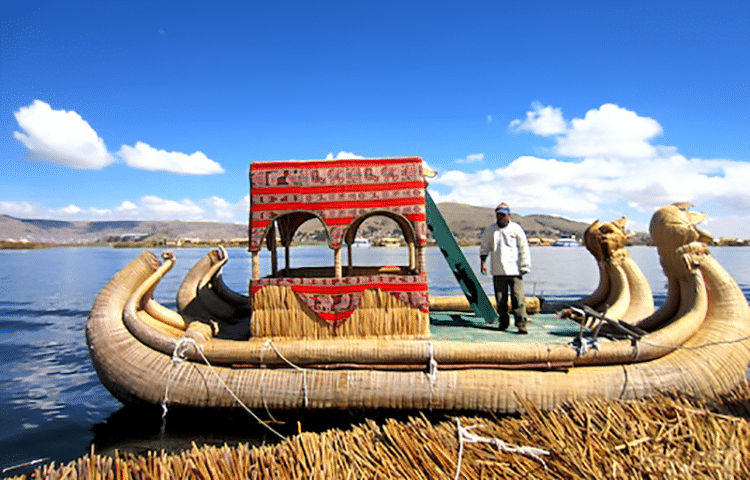Few countries offer as much diversity as Peru. From the Andean mountains to the Amazon to the islands of the mountain lakes, there are endless opportunities for adventure beyond the well-known trek to Machu Picchu. I set out to explore this fascinating country with my girlfriends, all of us jungle bound and ready for adventure.
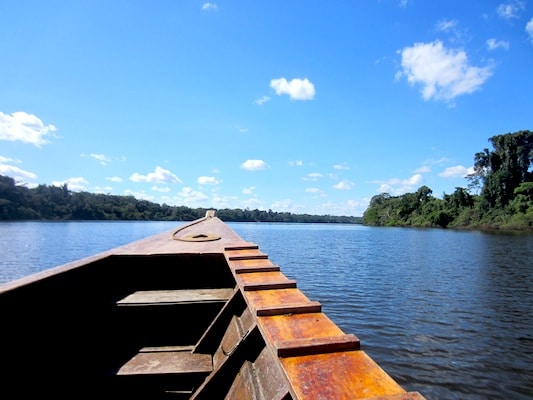
The Madre de Dios (Mother of God) River (a tributary to the Amazon) flows through the Peruvian jungle. Access to the wonders of this region is through Puerto Maldonado, the region’s capital city. Eco-lodges from rustic to luxurious are scattered along the river’s banks. Wooden boats shaded by canvas canopies are dispatched from the lodges to the docks in Puerto Maldonado to transport guests down river. Our boat skimmed the murky waters past riverside shanties into a world where cell phone reception is non-existent. An astonishing array of wildlife unfolded. Rare white caimans soaked up the sun’s warmth on the banks. Butterflies and parrots of every imaginable color flocked to the river’s edge to lick the clay which works as a natural digestive aid.
Herons, storks and macaw claim this corner of the world along with jaguars and anacondas. Our guide pointed out an odd looking bird, the punk chicken, named for its funky hair-style. It is also referred to as the “stinky bird” due to its tendency to continually pass gas. What a strange fascinating world!
After a 45 minute boat ride, we docked and climbed the banks of the Madre de Dios to the beautiful eco-lodge, Inkaterra Reserva Amazonica. Designed to effortlessly combine elements of nature with contemporary amenities, the lodge’s 35 private thatched roof cabanas provide rustic elegance in the midst of the dense rainforest. Nights are filled with the flickering flames of lanterns and each cabana offers organic toiletries, hammocks and a whistle… to call for help should you encounter a jungle night creature.
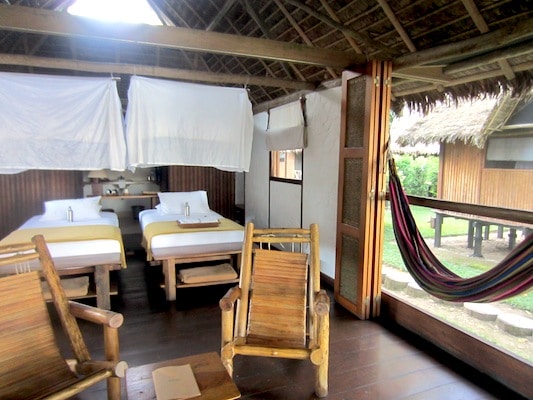
The main lodge and dining pavilion is a stunning rustic-chic structure built around the beautiful trunk of a strangler fig tree. Chefs prepare exquisite Peruvian cuisine which is served by candlelight on tables draped with white linen tablecloths. Lodge adventure options include a canopy walk through the treetops across six slightly terrifying rope bridges for a bird’s eye view of the jungle floor below, a hike through the jungle to Lake Sandoval for canoeing, night walks and boat rides to search for nocturnal jungle creatures. And my favorite, fishing for piranhas!
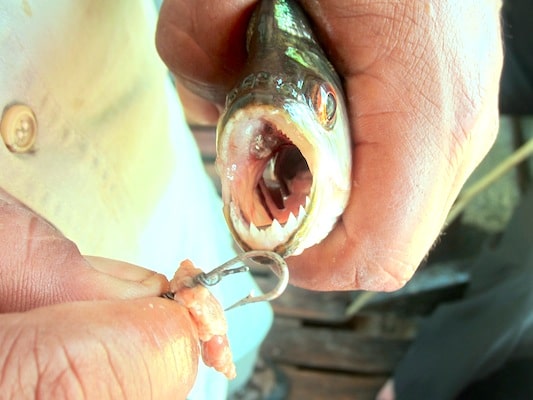
We headed out by boat early in the morning in search of piranhas. Our goal was to catch enough to eat them for lunch – before they ate us! Our guide, Wilson, provided primitive fishing poles whittled from Espintana and raw meat for bait. You have to be quick to hook a piranha – they greedily attack the meat as soon as it hits the water. They aren’t very big, but their notorious teeth are razor sharp. Our group’s expedition yielded 45 piranhas.
With a successful fishing expedition behind us, we boated further down river for a swim. Someone probably should have asked if the piranha would follow us, but we really didn’t want to know. Refreshed from the swim and relieved that there were no river creature encounters, we docked in a cove beside a make-shift kitchen for lunch in a riverside cabana. Banana leaves served as plates from which we savored a feast of cheese, ham, beef, baked potatoes and guacamole made from avocados from the surrounding rainforest. Wine and beer were on hand to toast the main attraction – a platter of surprisingly tasty fried piranhas!
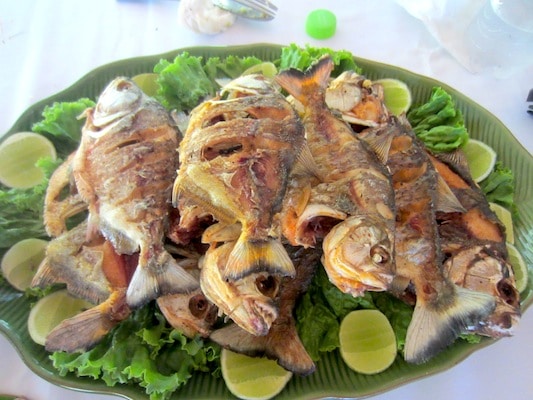
Our jungle adventures concluded, we headed south to explore the islands of Lake Titicaca. At 12,507 feet, Lake Titicaca is the highest navigable lake in the world. The lake is shared by Peru and Bolivia each laying claim to its most picturesque views. We boarded a boat in Puno for a tour of three islands on Lake Titicaca and the chance to connect with the rural indigenous cultures of the villages through a homestay.
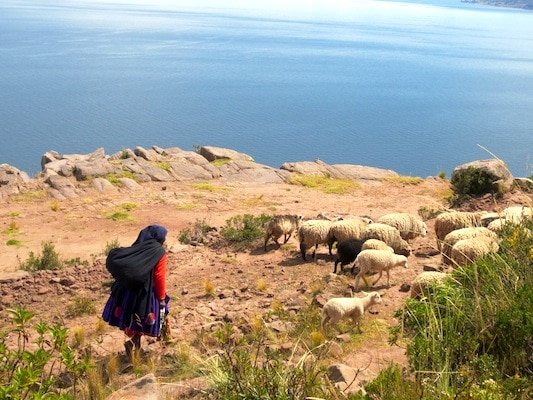
The first stop was the floating Uros islands. This group of about 40 small islands is home to 2,000 people from the Uros tribe, one that pre-dates the Incan civilization. The islands are built exclusively from totora reeds that grow in the lake. The reeds are also used to build their houses and boats and also serve as medicine and substance. According to Uros legends, the tribe existed before the sun when the earth was still dark and cold. They were impervious to drowning or being struck by lightning. Disobedience to the universal order and mixing with humans cost them their status as super beings and they scattered, losing their identity, language and customs. They became the Uro-Aymaras and now speak Aymara.
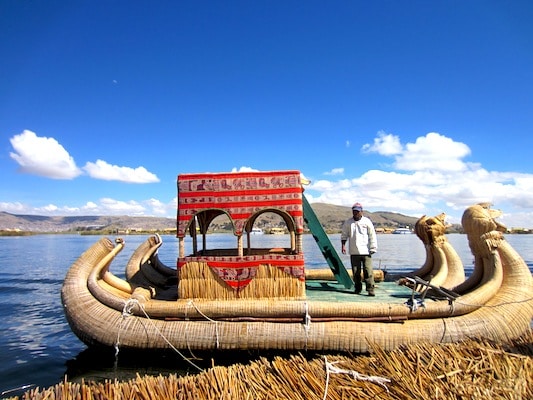
Today the natives survive by fishing but tourism provides most of their income. Villagers hawk their handicrafts and children serenade tourists as they ride in the reed boats. The islands have a Disney-esque feel until you remember that you are, in fact, walking around on floating islands made entirely of reeds in the middle of a lake in Peru with a tribe that began from super-human beings.
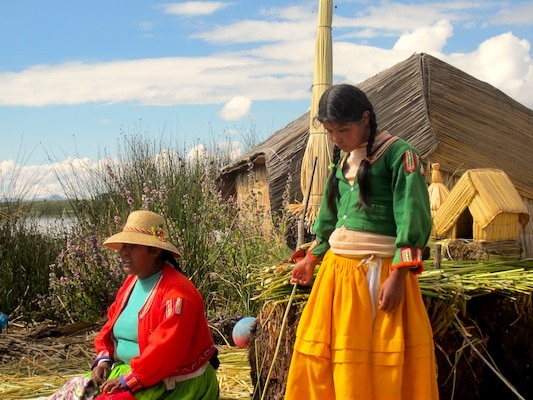
Traveling another three hours across the lake we reached Amantani Island where we would spend the night with a local family. Admittedly, homestays aren’t for everyone. Don’t expect luxury or possibly even indoor toilets. But if you are up for the adventure, a homestay provides a unique opportunity to connect with the local culture. Our host, Gladys, met us at the dock to lead us to her home. Due to the lack of oxygen in an elevation roughly the equivalent of heaven, keeping up with Gladys as she scrambled up the hills was no easy task. Even the local sheep came out to find the source of the heavy breathing.
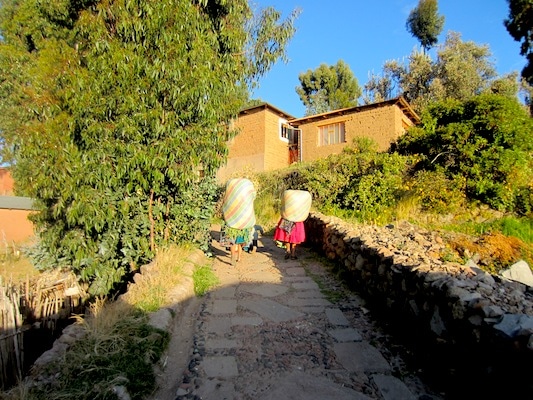
Our visit began with a typical lunch of quinoa soup followed by a main course of three types of potatoes (Peru has over 3,000 varieties), carrots and other vegetables. Loaves of bread baked in a primitive wood burning stove and coco tea were also served. Fortified we set out to explore the island with a stroll around the Plaza de Armas and nearby pathways. Curious village children, donkeys, horses and sheep accompanied our walk. Men in the village waved as they enjoyed their evening beer on the plaza steps – Happy Hour Amantani style.
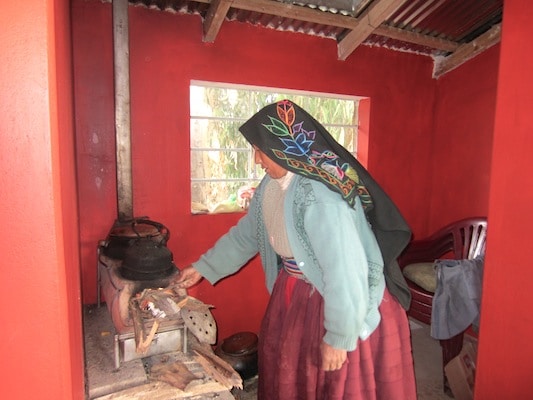
The next morning we boated to Taquile – a UNESCO World Heritage site that was relatively isolated from the mainland until the 1950’s. As a result the notion of community and family is still very strong among villagers. The town is known for its fine knitted and hand woven textiles and clothing. The knitting is done exclusively by the males starting at age eight while the women make the yarn and weave. Weaving traditions date back to early civilizations and still maintain elements from pre-Inca Andean cultures. The most characteristic of the garments is the “Chullo” – a knitted hat with an earflap.
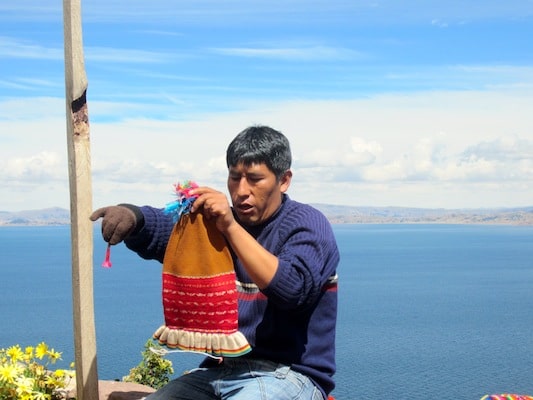
A long narrow trail leads from the boat dock up to the main plaza winding past ancient agricultural terraces and ruins dating back to pre-Inca times. The views of Lake Titicaca below and Bolivia’s mountain ranges in the distance are stunning. As we sat perched on an ancient terrace overlooking the azure waters of Lake Titicaca, a woman in traditional clothing passed beneath us herding her sheep. It seemed we had truly found a place untouched by time.
The country code for Peru is 51.
[alert type=white]
Lodging and Excursions:
Inkaterra Reserva Amazonica—Experience rustic elegance at the here on the banks of the Madre de Dios river in the Amazon. All meals and most guided excursions are included. Additional excursions can be customized for your group. The lodge has a massage spa overlooking the Madre de Dios for the ultimate adventure recovery. Transportation to and from the airport in Puerto Maldonado is included. Inkaterra Peru, Andalucia 174, Miraflores L18, Lima, Peru ; Tel :+51 1 610 0400 ; www.inkaterra.com/inkaterra/reserva-amazonica/
Lake Titicaca Tours & Homestay–Customized tours and arrangements for homestay are available through Condor Travel. Condor Travel; Tel: +511 615-3000 Ext. 537;
Toll Free (USA): 1–877-236-7199; www.condortravel.com/en/travel/to/peru/
Casa Andina Private Collection Puno—Casa Andina’s Puno hotel offers top of the line guest rooms with breathtaking views of Lake Titicaca. Av. Sesqui Centenario 1970, Puno
PUNO 001, Peru; Tel: +511 213-9720; www.casa-andina.com
Getting There:
The Amazon
LAN Airlines offers daily domestic flights from Lima via Cusco to Puerto Maldonado. Inkaterra personnel will pick you up at the airport in Puerto Maldonado and transfer you to the docks where you will travel by boat to the lodge. www.lan.com , 866-ifly-lan
Lake Titicaca
LAN Airlines offers daily domestic flights to Juliaca. Condor Travel will arrange for transportation to and from the airport to your hotel in Puna. www.lan.com , 866-ifly-lan
[/alert]

